In late 2013, Kawasaki Heavy Industries, Ltd. set the motorcycle world on fire with the unexpected unveiling of an all-new and centrifugally-supercharged 998cc inline 4-cylinder at the 2013 Tokyo Motor Show. Although reminiscent of the larger 1,498cc (1.5 liter) DOHC 4-cylinder four-stroke found in current Ultra 310X model JetSkis, the new motor was revealed later through a dynamic campaign as the future powerplant for the soon-to-be-released track-only H2R superbike.
The announcement of the H2R engine’s production of a world-leading 300 horsepower shook the powersports industry. Tipping the scales at just over 100-pounds, the compact, lightweight 4-stroke powerplant features a four-valve, dual overhead cam (DOHC) cylinder head force-fed by a dog-shifted two-speed, gear-and-shaft driven centrifugal supercharger (designed with assistance from the KHI Gas Turbine & Machinery Company, Aerospace Company, and Corporate Technology Division).
Until now, this engine was only available in the Ninja H2R and more recently in the slightly tamer street version, the H2 (producing a 197-horsepower via mildly boosted at 5 psi (34 kPa), versus the 20.5 psi of the H2R). Only in the past two weeks have dealerships started receiving units, making the announcement that Kawasaki Heavy Industries, Ltd. has introduced two marine-approved applications of the 1-liter H2 engine through its Gasoline Engine/Power Products division so surprising.
The Watercraft Journal reached Usagi Yojimbo in the Kawasaki Heavy Industries, Ltd. Chūō-ku, Kobe headquarters, who explained, “Kawasaki recognized the potential of the [H2] engine in a variety of applications during its development. In wanting to secure its leadership role in all divisions of motorsport, Kawasaki arranged for two marine applications of the 998cc 4-cycle engine to be built. Both the motorcycle and marine engines share the same supercharger and many other components, with the exception of the head gasket, cam profile and timing, and exhaust system.”
“Both a 200-horsepower supercharged and normal aspirated [estimated to be rated at 160-horsepower – Ed.] version will be made available to select [custom jet ski] builders,” Usagi continued. When asked concerning eventual domestic (United States) availability of the two marine grade engines, Usagi responded, “We anticipate the program will be well received locally, thereby permitting a wider distribution in following years.”
Kawasaki has yet to officially release the names of the custom ski builders pre-approved to receive the H2 engines.
Because of the limited nature of the availability, word of this program had yet to go widespread. American and Australian custom hull builders – specifically, Krash Industries, Bullet Racing, WWR and Trinity Composites – have expressed public interest in the lightweight 4-stroke powerplant, but with the decision to provide only a select few Japanese boat builders with the opportunity to build custom standup jet skis with the new Kawasaki engine leaves them searching for alternatives.
Even the naturally-aspirated, 100-pound, 160-horsepower 4-stroke engine could – in The Watercraft Journal’s assessment – radically tip the scales for future Pro Ski Open and Pro Ski GP classes, as conventional triple-cylinders weigh more than the current motorcycle plant. And considering the recent IJSBA rule changes, it is also very likely that H2-powered skis would qualify for Pro Ski Stock classes.
Either way, unveiling such a program is a tremendous gamble on Kawasaki’s part, but we all know that the industry leader in over-the-top performance isn’t one to shy away from a challenge. There are still a lot of questions left unanswered and await further details on this groundbreaking program. For the original announcement and some additional information on the new Kawasaki H2 marine engine, click HERE.







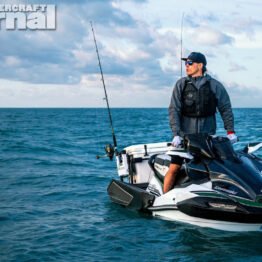

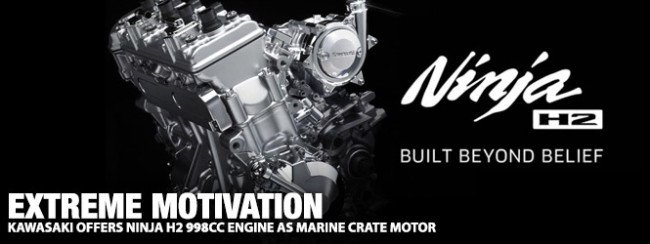
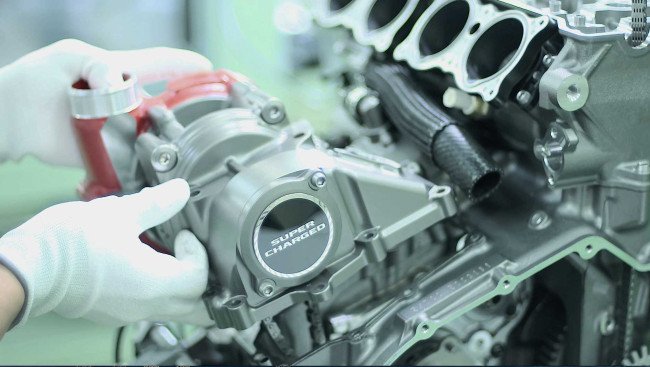

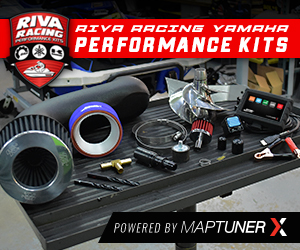
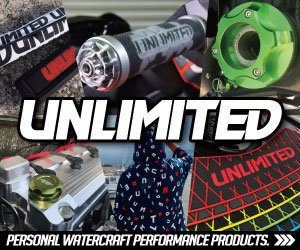
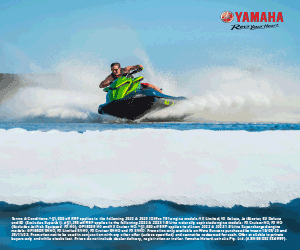

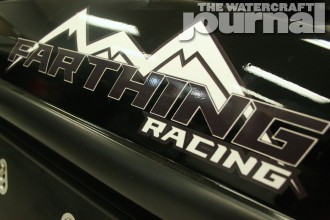
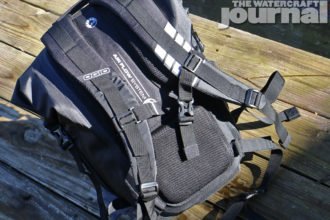
Poisson d’Avril
Exactly why in the word would they try and do this? A motorcycle engine has a clutch and transmission all as a part of the engine cases, how’s that going to work seeing as how PWC engines are direct drive with no clutching? And doesn’t Kawasaki use twin screw superchargers on Jet Skis where the H2 engine is a centrifugal?
FINALLY!!!! The Watercraft Gods have responded!
It’s about time Kawasaki stepped up to keep the PWC market that they started moving forward in all areas, not just runabouts.
Now they just need to make those engines available to everyone…and at a reasonable price…
Nevermind with the excitement…April Fools HA HA 🙁
This story is really not funny. I guess we need to hope for something like this to happen in the PWC industry.
Good Try WCJ
thats a sick joke and in bad taste not appreciated by the stand up followers